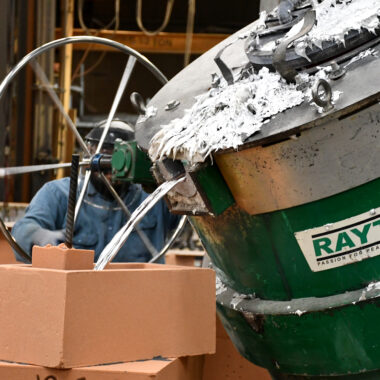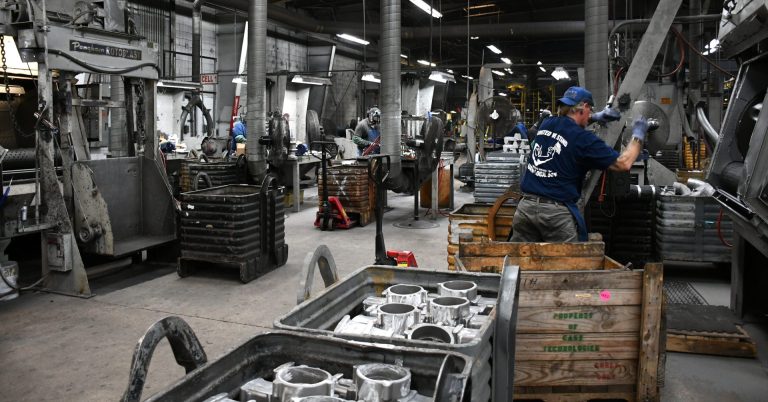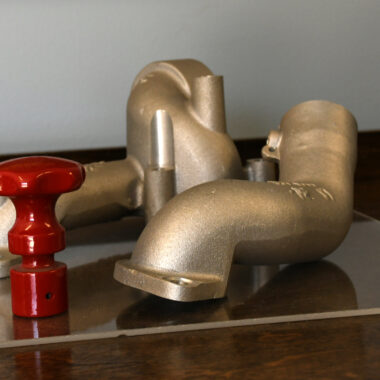Unraveling About Aluminum Casting: From Fundamentals to Know-how
Wiki Article
Crafting Perfection: How to Accomplish High-Quality Aluminum Castings Each Time
In the realm of light weight aluminum spreading, the search of perfection is a continual trip that calls for a careful approach and a keen understanding of the details involved. Achieving consistent high-grade light weight aluminum castings requires an extensive grasp of the procedures, from selecting the appropriate alloy to executing exact mold and mildew layouts and carefully regulating casting parameters.Comprehending Aluminum Casting Procedures
Aluminum casting procedures, crucial in the manufacturing industry, include the complex change of liquified aluminum into strong types via a collection of meticulously controlled steps. Comprehending these processes is vital to attaining high-quality aluminum spreadings continually - about aluminum casting. The main methods made use of in aluminum casting are die spreading, sand casting, and investment casting
Each of these processes has its benefits and is picked based upon variables like complexity, volume, and preferred finish of the light weight aluminum spreading. about aluminum casting. Understanding the intricacies of these techniques is crucial for suppliers aiming to generate high-quality light weight aluminum castings regularly
Picking the Right Light Weight Aluminum Alloy
Picking the proper aluminum alloy is a vital choice in the production of high-grade light weight aluminum spreadings. When choosing an aluminum alloy for spreading, it is necessary to take into consideration the certain requirements of the application to make certain ideal efficiency.One of the most typically used aluminum alloys for casting is A356 - about aluminum casting. For applications needing high toughness, 7075 light weight aluminum alloy is a prominent selection due to its exceptional strength-to-weight proportion.
Along with mechanical buildings, considerations such as expense, schedule, and post-casting procedures need to likewise affect the option of the best light weight aluminum alloy. By thoroughly reviewing these factors, producers can guarantee the manufacturing of high-quality light weight aluminum castings that fulfill the desired specifications.
Implementing Appropriate Mold And Mildew Layout
Creating a reliable mold and mildew design is essential for making certain the successful manufacturing of high-grade light weight aluminum spreadings. Proper mold style plays a considerable duty in attaining the desired qualities of the last product. To execute an effective mold and mildew layout, factors such as product circulation, cooling prices, and component geometry should be carefully considered.One key element of mold and mildew layout is guaranteeing correct filling and solidification of the aluminum within the mold cavity. This involves developing jogger and gating systems that facilitate smooth steel flow and avoid issues such as air entrapment or insufficient dental filling. Additionally, including air conditioning channels into the mold style assists control solidification prices and reduce the threat of porosity or shrinking problems.

Controlling Spreading Parameters

Making Sure Post-Casting High Quality Checks
To preserve the high top quality of aluminum spreadings, comprehensive post-casting top quality checks are important. After the casting procedure is finished, it is important to make certain that the final items meet the desired requirements and requirements.Dimensional precision is another vital facet that needs to be verified throughout post-casting high quality checks. Measurements of crucial dimensions and resistances ought to be required to confirm that the spreadings adjust to the called for requirements. In addition, mechanical buildings such as firmness, tensile toughness, and influence resistance might need to be evaluated through material screening to guarantee that the castings possess the needed strength and durability for their desired application.
Final Thought
In conclusion, achieving premium aluminum castings requires a thorough understanding of the spreading processes, picking the appropriate alloy, creating molds properly, controlling casting specifications carefully, and carrying out post-casting high quality checks vigilantly. By complying with these actions, producers can consistently produce light weight aluminum spreadings that fulfill the highest standards of high quality and performance.Achieving consistent premium light weight aluminum spreadings requires a thorough grasp of the procedures, from picking the suitable alloy to performing specific mold styles and thoroughly controlling casting criteria. The key methods made use of in light weight aluminum casting are pass away casting, sand casting, and financial investment spreading.
Financial investment casting, also recognized as accuracy spreading, involves producing wax patterns that are browse around here coated in ceramic to form molds.Choosing the appropriate aluminum alloy is a crucial decision in the manufacturing of top quality aluminum castings.Guaranteeing accurate control over spreading criteria is important for maintaining uniformity and quality in light weight aluminum casting production.
Report this wiki page